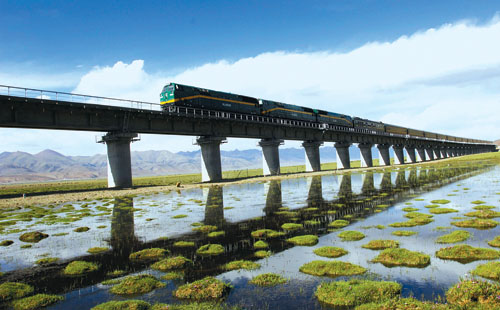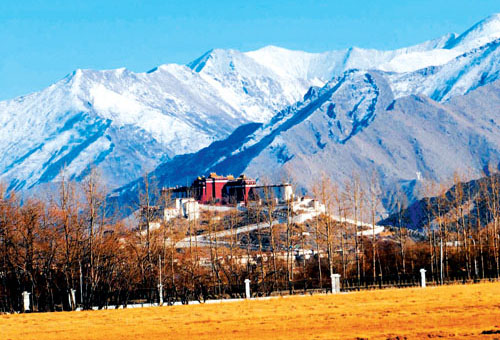 Qinghai-Tibet Railway: Bridges are built in many areas to protect plants and wetlands.
Qinghai-Tibet Railway: Bridges are built in many areas to protect plants and wetlands.
The year 2007 was the second year of operation of the Qinghai-Tibet Railway. The operation has has removed misgivings in terms of eco-environmental protection on the plateau.
The railway adopted bridge-instead-of-embankment measures to protect the ecological environment, permafrost and wetlands on the Qinghai-Tibet Plateau. A great number of bridges were constructed specially only in the territory of the TAR to better protect the local ecological environment. Practice has proven the railway can run in both a warm and cold seasons without harm. Through railroad surface heat preservation technology, distortion of most of the roadbed has been within a small range, the average sedimentation being about two centimeters, and variation coefficients have stayed within a controllable range. The construction of the Qinghai-Tibet railway did not exert adverse influence upon the ecological environment of the plateau.

Lhalu Wetland in Lhasa has been listed as a national nature reserve.
Stations along the line use environment-friendly energy sources such as solar and wind energy for heating. Garbage is collected for batch treatment. Domestic sewage, after being treated to meet the State's discharge standard, is used, whenever possible, to water green spaces. Garbage on the sealed trains is collected in plastic bags handed over to stations along the plateau for batch treatment. To suit the characteristics of the plateau, the central station management mode is adopted, with seven central stations established along the line. Each of these stations is totally responsible for the trains' running and maintenance in an area within a radius of 80 km. Wherever possible, remote automatic control and mechanized maintenance are adopted to reduce the number of both the organizations and their staff on the plateau, thereby giving maximum protection to the natural eco-environment of the Qinghai-Tibet Plateau.
Almost all land along the Qinghai-Tibet Railway has been made green. Bare earth basically cannot be seen so that the rails are difficult to spot from distance. In 2007, the TAR government set up the Qinghai-Tibet Railway Environment Monitoring Mechanism to conduct dynamic and continuous monitoring of the water, air, sound and ecological environment.
(China's Tibet Facts and Figures 2008) | 